¿Cómo se Cultiva la Glicina Flores, Variedades, Propagación y Cuidados
La glicina es una de las plantas trepadoras de jardín más populares. También se la conoce como wistaria o glicina, aunque estos nombres se utilizan raramente. La planta es muy conocida por la abundancia de flores que desarrolla: sus características floraciones pueden verse desde bastante lejos. ¿Se pregunta cómo cultivar una glicina sana? Descúbralo y cuide bien esta magnífica planta.

Wisteria - ¿Cuál es el origen de esta planta?
La Wisteria (Wisteria speciosa), también conocida como glicina (Glycine frutescens) o wistaria, es una de las plantas más antiguas que se cultivan actualmente en jardines. La especie es originaria de América del Norte, donde era conocida con el segundo nombre mencionado. Cuando llegó a Europa, adquirió su nombre más común. Como señalan algunas fuentes, las especies de glicinas crecen también en Asia.
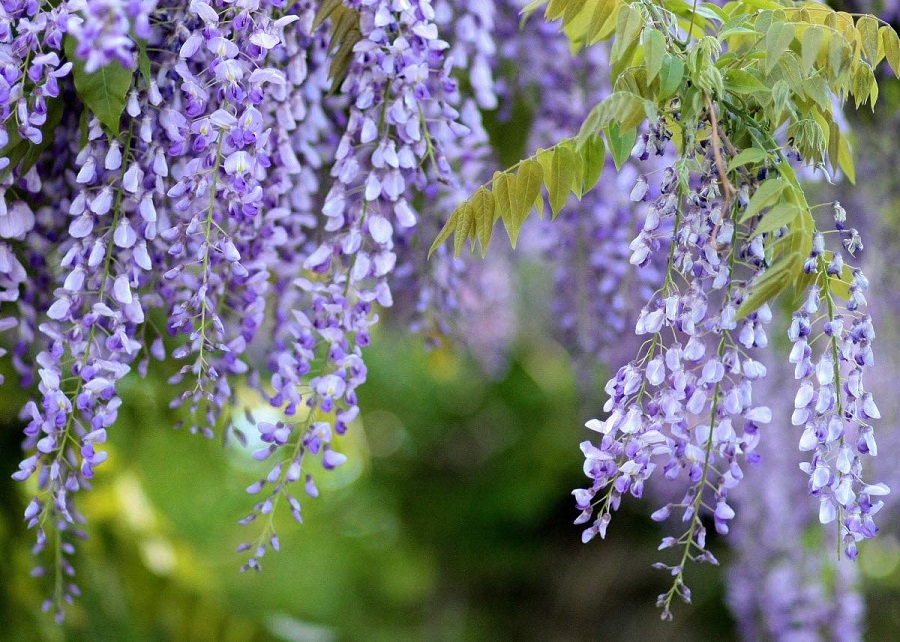
¿Qué aspecto tiene la glicina?
La glicina es una planta trepadora, bastante alta, ya que puede alcanzar los 10 metros. Además, crece bastante rápido. Su amplitud y sus flores exuberantes son rasgos característicos que diferencian a esta planta de otras. Las glicinias más pequeñas miden apenas unos centímetros de altura, mientras que las plantas más viejas alcanzan cerca de 1 metro de altura.
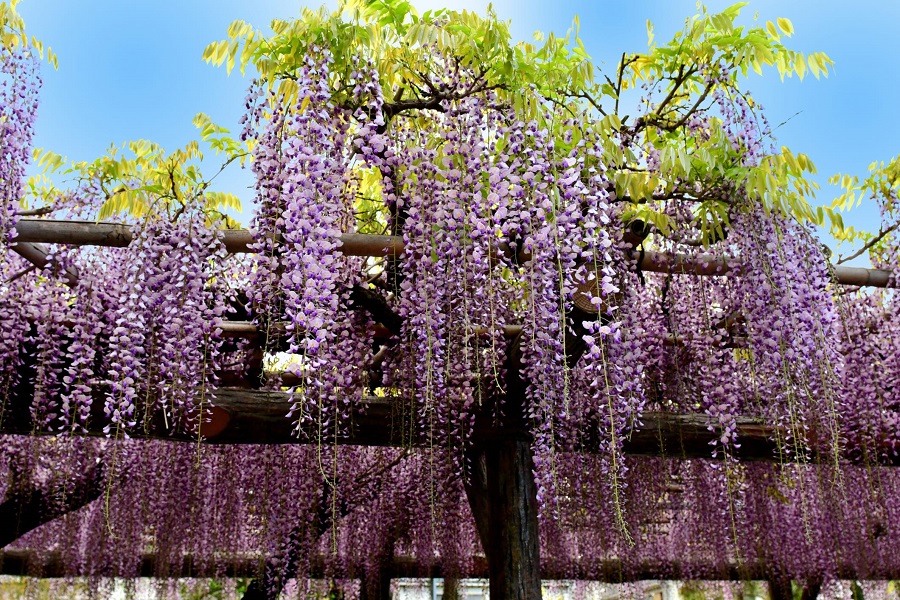
Wisteria - variedades populares
La distinción básica de las glicinas consiste en dividirlas en diferentes especies. En este caso, se puede, distinguir los siguientes tipos populares:
- Gisteria china (Wisteria sinensis)
- Gisteria japonesa (Wisteria floribunda)
Aunque ambas variedades son bastante similares, se diferencian en las hojas, la época de floración y la longitud de las ramas.
Los dos grupos mencionados contienen los cultivares más populares que se cultivan en los jardines. Son, por ejemplo:
- Glicinia japonesa ‘Noda
- Glicinia japonesa ‘Alba
- Glicinia japonesa ‘Honbeni
- Glicina japonesa ‘Domino’.
- Glicinia china ‘Prolific’.
- Glicinia china ‘Amethyst’.
Además de las dos especies mencionadas, existen otras variedades de glicinas. Entre ellas están:
- Glicina sedosa ‘Wisteria brachybotrys’
- Glicinia americana ‘Wisteria frutescens’.
- Glicinia x formosa - un híbrido de glicina china y japonesa.

¿Cuál es la mejor ubicación para una glicina?
La glicina tiene algunos requisitos especiales en cuanto a la ubicación en la que crece. Un lugar solado y cálido es la mejor opción para esta planta. Se desarrolla mejor en esas condiciones. Incluso una sombra ligera podría reducir su tasa de floración. Además, el lugar debe estar protegido del viento. Los golpes intensos podrían dañar las largas ramas de la planta.
El mejor suelo para las vides de glicina
El suelo en el que crece la glicina es tan importante como la ubicación. La planta prefiere un suelo muy fértil, preferiblemente rico en humus. También debe ser bastante suelto. En cuanto al nivel de pH, debe ser ligeramente ácido o neutral. La tierra debe estar relativamente húmeda, ni demasiado húmeda ni demasiado seca.
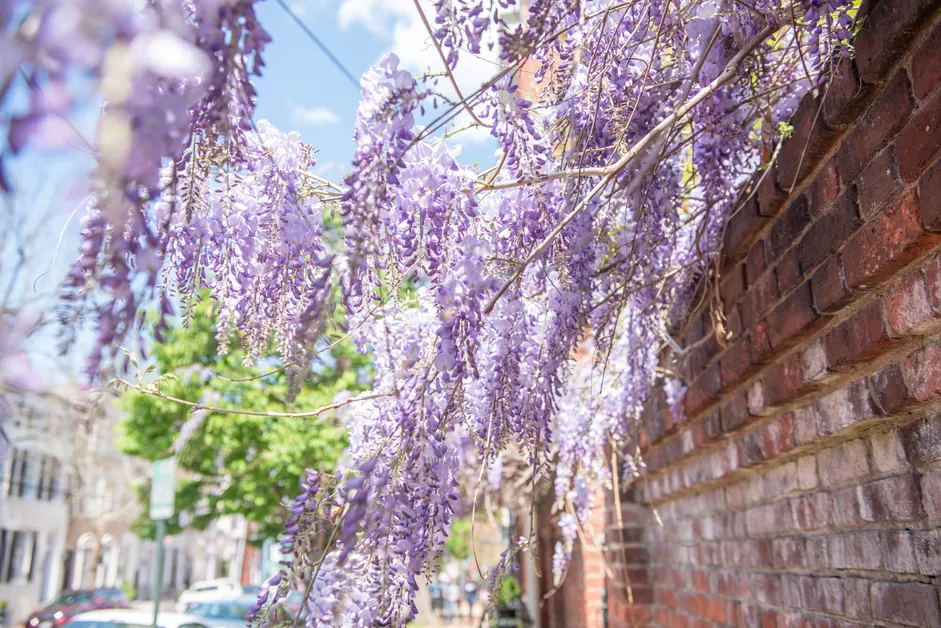
Wisteria en la pérgola - ¿es una buena solución?
La glicina es una decoración perfecta para una pérgola, un balcón o un patio. Como crece rápidamente, tiene un aspecto increíble al cabo de un año de haberla plantado en un lugar así. Tenga en cuenta que una glicina plantada junto a una pérgola no necesita ningún soporte adicional. Basta con controlar las ramas de la planta, asegurándose de que se apoyan en los elementos de la construcción.
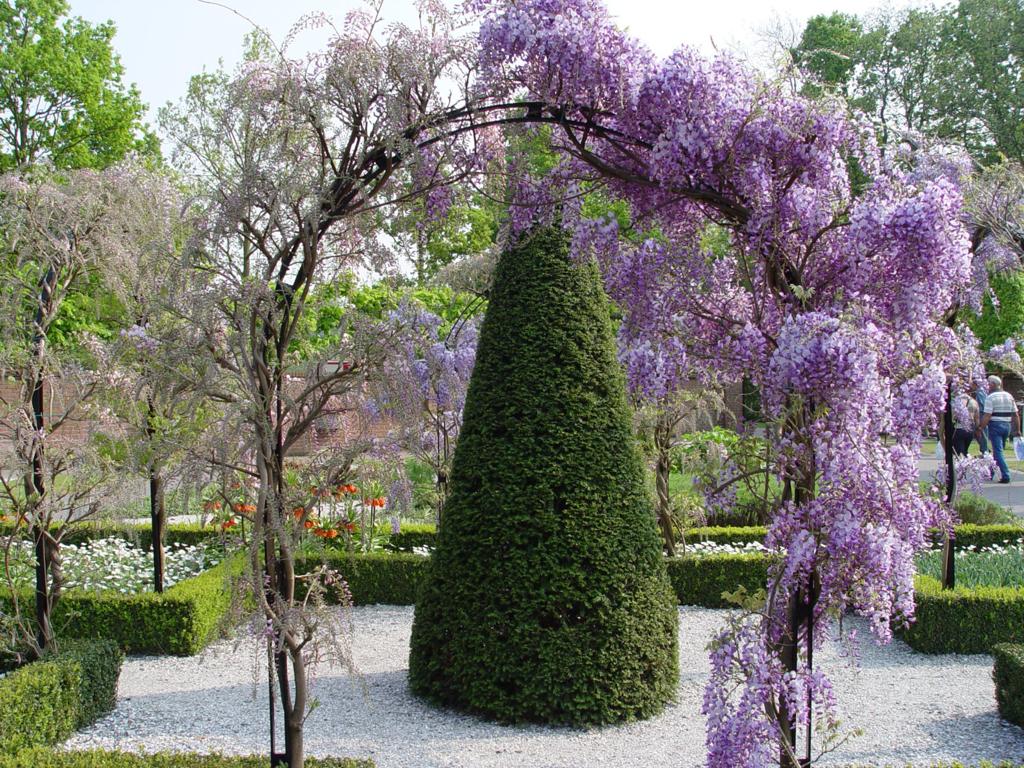
¿Cómo cultivar glicinas en macetas?
Mucha gente se pregunta si la glicina en macetas es una buena idea. Plantar esta especie directamente en el suelo es definitivamente una solución mucho más popular - pero no significa que no pueda plantarse también en contenedores. Pero si te decides por esta solución, recuerda que la planta necesita espacio suficiente para un crecimiento adecuado. Plante las plántulas jóvenes en macetas grandes, para evitar tener que replantarlas al cabo de unos meses.
¿Cuándo plantar glicinas?
Al plantar glicinas, hay que atenerse a los períodos recomendados, es decir, primavera u otoño. Además, tenga en cuenta que las glicinas pueden no florecer inmediatamente en la siguiente temporada. En algunos casos, hay que esperar incluso algunos años para que florezcan.
¿Cuándo florece la glicina y de qué color son las flores?
Independientemente de la variedad de glicina que elija, siempre florece más o menos durante el mismo periodo: entre mayo y junio. La única diferencia entre las distintas especies es que algunas desarrollan las flores antes, por ejemplo, a principios de mayo, mientras que otras lo hacen más tarde, a principios de junio.
En cuanto a los colores, la mayoría de las variedades desarrollan flores en diferentes tonos de púrpura. Sin embargo, hay algunas excepciones. Algunas vides de glicina desarrollan flores de los siguientes colores:
- blanco,
- rosa.

¿Es la glicina resistente a las heladas?
La glicina es una planta altamente resistente que puede soportar bajas temperaturas y fuertes heladas. Puede aguantar incluso a -20°C (-4°F). Tenga en cuenta que las plantas deben prepararse correctamente antes del invierno, especialmente las jóvenes. Asegúrese de sujetar las cepas con pajas o agrotextil.
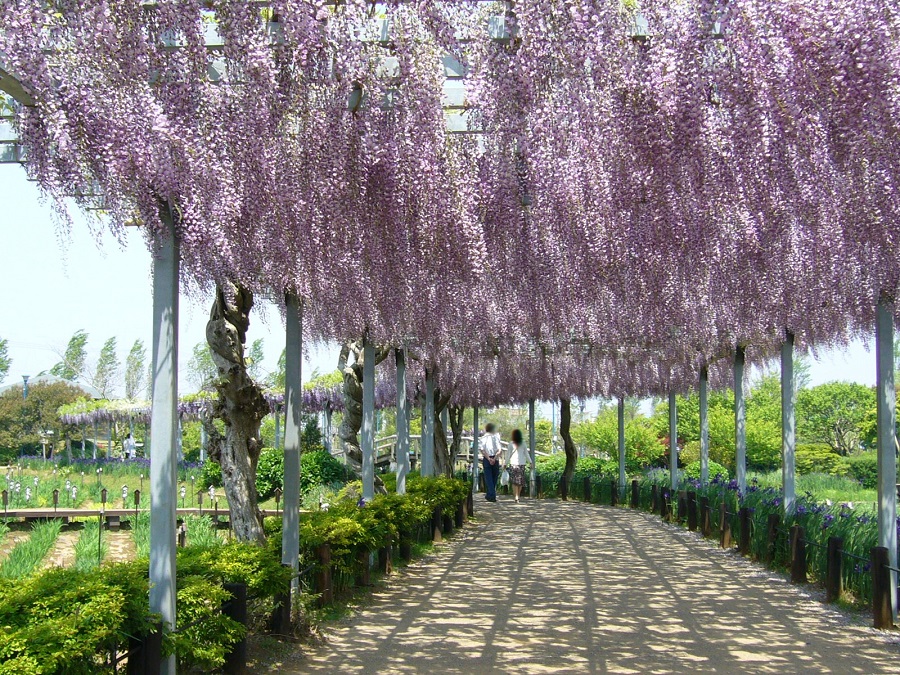
¿Cómo se propagan las glicinas?
Hay dos métodos para propagar las glicinas. El más popular consiste en sacar esquejes verdes, enraizarlos y plantarlos en contenedores. El otro se llama acodo aéreo. No requiere cortar los tallos. Es rápido y fácil. Basta con hacer un delicado corte en el tallo que quieres enraizar y enterrarlo en la tierra. Al cabo de un tiempo debería crecer una nueva planta.
¿Cuáles son las enfermedades y plagas más comunes que atacan a la glicina?
Las hojas amarillentas son una señal de que su glicina no se está desarrollando correctamente. Las razones de esto son diversas. A veces es el resultado de un error en el cuidado de la planta, pero también puede estar causado por enfermedades fúngicas como la botrytis. Afortunadamente, es bastante fácil de resolver. Si la enfermedad está en su fase inicial, las pulverizaciones naturales deberían solucionar el problema. Si el problema está más avanzado, no esperes. Sólo los productos químicos pueden ayudar.
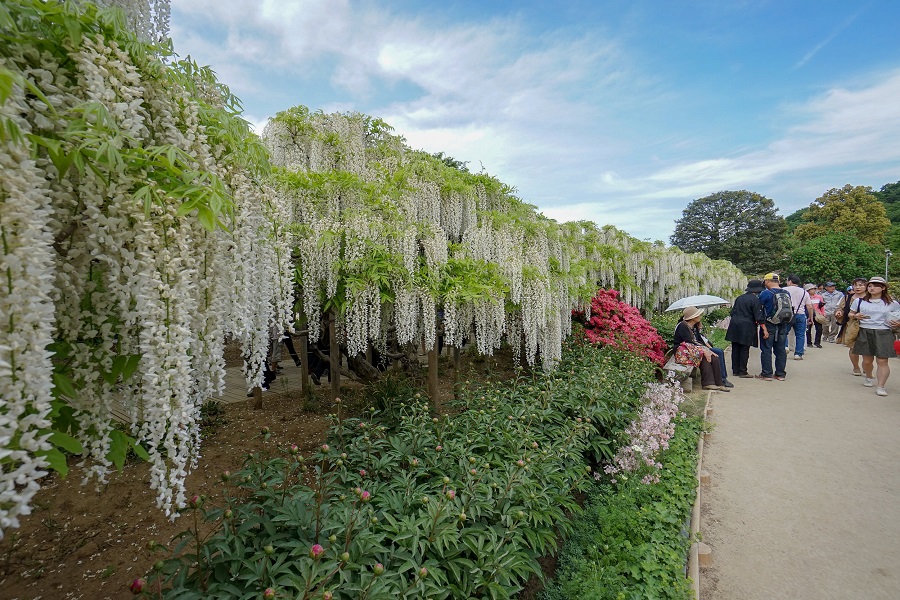
En cuanto a las plagas, la glicina es bastante resistente a ellas. Por supuesto, insectos como los pulgones o los ácaros podrían seguir atacándola. Pero no son una preocupación que no puedas resolver tú mismo.
Precio de la glicina
El precio de la glicina depende sobre todo de la variedad que quieras comprar y del tamaño que tenga el plantón. Las plantas más pequeñas están disponibles en las tiendas de jardinería por 20 Euros y más. Las glicinas más grandes cuestan incluso 50 Euros. No es mucho, teniendo en cuenta lo rápido que se propaga la planta y que es una planta perenne.
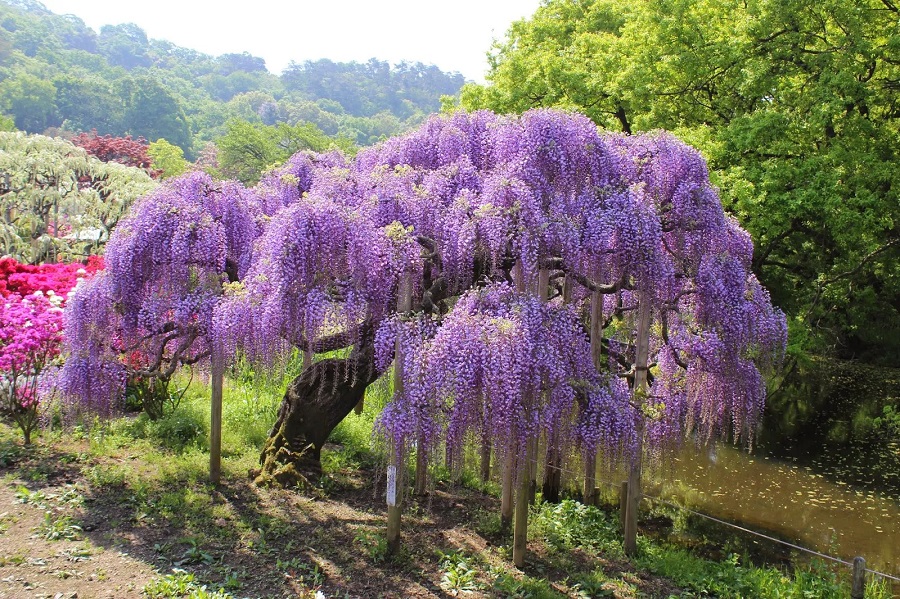
📍 ¿Cuándo florecen las glicinias?
Las glicinias florecen en mayo y junio; el momento exacto depende de la variedad. Las flores permanecen durante unos dos meses. Puedes decapitar las flores secas, lo que hace que la planta sea más fuerte.
📍 ¿Cuándo plantar una glicina en el jardín?
Puedes plantar las glicinias en primavera y en otoño. Las plantas jóvenes y delicadas se beneficiarán de la plantación en primavera, ya que gracias a ello no estarán expuestas a las heladas tan pronto.
📍 ¿Cuánto tiempo florecen las glicinias?
La glicina florece durante unos dos meses. A veces, si la planta está bien cultivada, las flores pueden permanecer más tiempo, incluso hasta el otoño.
📍 ¿Por qué no florece mi glicina?
La exposición a las heladas es la razón más común de la falta de floración de las glicinias. También puede ser un signo de enfermedad, plagas o deficiencia de nutrientes.
Artículos destacados




